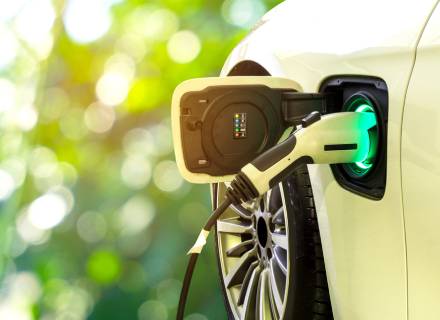The Biden administration officially announced last week that American automobiles are becoming electric.
The long-awaited rule requiring automakers selling in the US to significantly increase the number of battery-powered vehicles sold this decade was finalised by the US Environmental Protection Agency. This will significantly reduce the nation’s carbon emissions. More than half of newly sold automobiles must be electric by 2032.
Changes made since the regulations were first proposed in draft form about a year ago would provide automakers more flexibility in determining how to meet the government’s new tailpipe emissions targets. One significant change: plug-in hybrids are now an option.
Automakers could only reach the progressively stricter zero-emission targets under the proposed rule by increasing the sales of battery-electric vehicles. However, manufacturers will now be permitted to employ plug-in hybrids to achieve the standards, thanks to pressure from automakers and unions, both of whom claimed that the EPA’s suggestions were unachievable.
Accordingly, automakers can now comply with federal regulations by making sure that, by 2032, battery-electric vehicles will account for two-thirds of their sales, or slightly more than half, while plug-in hybrids would make up the remaining 13 per cent.
As automakers rush to fulfil the country’s most aggressive climate objectives to date, expect them to make use of these hybrid vehicles, which are largely powered by electric batteries and then supported by a gas-powered engine once the batteries run low.
These things are going to be abundant on the route. The device does, however, have a climate catch: its drivers can pick how emission-free they want it to be.
Gateway To EV
Executives from several automakers, including Audi, BMW, General Motors, Mercedes, Volvo, and the Chinese EV producer BYD, have expressed optimism in recent months that the “compromise” cars will catalyse the mass adoption of electric vehicles. Furthermore, Toyota may feel vindicated by the policy change since it has wagered that consumers will gravitate toward plug-in and gas-electric hybrids instead of following Tesla’s lead and purchasing all-electric vehicles.
Plug-in hybrid sales are increasing more quickly than those of battery-electric vehicles worldwide, albeit in part because the hybrids still have a ways to go. Data from market research firm BloombergNEF shows that between 2022 and 2023, sales of plug-in hybrids increased by 43% to over 4.2 million units. During the same time frame, sales of battery-electric vehicles rose by 28% to close to 9.6 million.
The technology has a few strong advantages. Since most American drivers only go 30 miles a day on average, most could get by on the electric battery of a plug-in hybrid and only use gas for longer excursions.
Additionally, plug-in hybrids ease the manufacturing anxieties of several automakers: Although they cost more to construct than pure battery electrics (the two-motor setup), the technology can occasionally be added to already-owned gas-powered vehicles. Short-term, this means less work—an exciting prospect for an industry that, as it transitions to electric vehicles, will need to rethink how it acquires the resources needed to make its cars run on batteries over the next few decades.
Automakers now have a few more years to complete their electric vehicle portfolio, according to Gil Tal, the director of UC Davis’ Plug-In Hybrid and Electric Vehicle Research Centre.
Furthermore, some view plug-in hybrids as a method for those who are apprehensive about switching to a new drivetrain to become acclimated to the concept of driving a fully electric car.
“We observe a lot of customers who start with a plug-in hybrid and move to a fully electric vehicle for their next vehicle,” Volvo’s deputy CEO and chief commercial officer, Bjorn Annwall, said in a call with investors last month.
He went on, to say that Volvo “will get further love and care with smart investments” for the cars.
However, data from Europe, where plug-in hybrids have been around for a while, indicates that things are a little more nuanced there. Occasionally, plug-in hybrid owners use their time with the cars to get used to charging them before deciding to switch entirely to battery power, according to Patrick Plötz, a transport electrification policy researcher at the Fraunhofer Institute for Systems and Innovation Research ISI in Germany.
But occasionally the opposite is true, according to him: drivers, particularly those who drive plug-in hybrids with shorter-range batteries, feel that “it’s the worst of both sides.” A portion of these motorists retreat to their familiar gas-powered vehicles.
Unsatisfactory Plug-In Conduct
Plug-in hybrids’ emissions production and environmental friendliness are dependent on how their drivers utilise them. Most of them can be powered by electricity. However, data indicates that some drivers may not be charging their cars sufficiently, which causes their batteries to run low and forces them to run mostly on gasoline. Their travels cause an increase in greenhouse gas emissions. It would be like if those drivers were operating internal combustion engines.
According to Tal, a researcher from UC Davis, anyone looking to cut their carbon emissions quickly should consider fully battery-electric vehicles based on his studies of plug-in hybrid drivers’ behaviour. That “gateway electric” notion has grown on him.
He said, “I view plug-in hybrids as an addition, not a means of transitioning to fully electric vehicles.”
The US EPA acknowledged that plug-in hybrid driving is far from emissions-free in the real world to appease environmentalists and auto lobbyists when it released the new tailpipe emissions guideline.
According to David Reichmuth, a senior engineer at the Union of Concerned Scientists, a research and advocacy group, the government’s regulations, however, are predicated on the idea that real-world drivers will eventually become more conscientious about plugging in their cars.
Could a reliance on plug-in hybrids by automakers hinder the transition? Reichmuth says maybe. “Yet ultimately, the [new emissions regulations] represent a significant advancement.”


